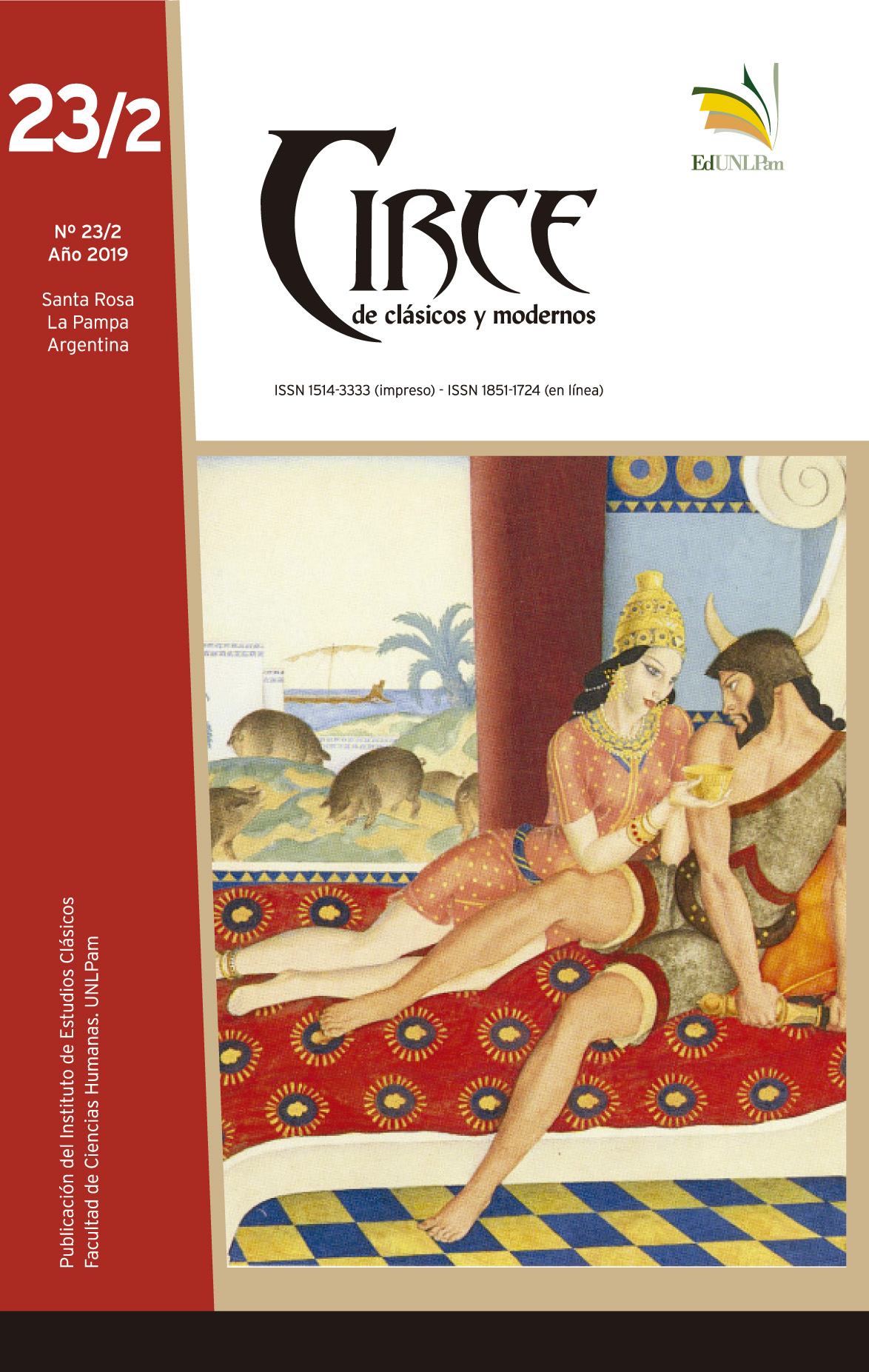The Vocabulary of Vision in Euripides’ Medea and in Seneca’s Medea: A Comparative Study
Keywords:
vocabulary, vision, Medea, Euripides, SenecaAbstract
This paper intends to make a comparative study of the vocabulary related to the semantic field of the sense of vision in Euripides’ Medea and in Seneca’s Medea. We consider that this issue is of a prominent relevance in both tragedies, due to the high frequency of the explicit mention of these words. The aim is to analyze comparatively which implications these terms have in both plays, in order to examine to what extent they can provide a key for reading each of them. The hypothesis is that the vocabulary related to the sense of vision has a different dramatic function in these tragedies. Specifically, this implies a distinct configuration of the main character as a tragic character, and this may as well shed light on the global understanding of these plays.
Downloads
References
Fuentes
Diggle, J. (1984). Euripidis Fabulae I, Oxford: Clarendon Press. Zwierlein, O. (1986). L. Annaei Senecae Tragoediae. Oxford: Clarendon Press.
Diccionarios
Bailly, A. (1901). Abrégé du dictionnaire grec-français. Paris: Hachette.
Chantraine, P. (1968). Dictionnaire étymologique de la langue grecque. Paris: Klincksieck.
Ernout, A. & Meillet, A. (1951). Dictionnaire étymologique de la langue latine. Paris: Klincksieck.
Bibliografía citada
Benton, C. (1999). Women, Violence and the Gaze in Euripidean and Senecan Tragedy. Tesis doctoral. University of Southern California. Disponible en: http://digitallibrary.usc.edu/cdm/ref/ collection/p15799coll17/id/571035 [consulta: 16/08/19]
Liebermann, W. (2014). “Medea” en Damschen, G.; Heil, A. (eds.). Brill’s Companion to Seneca. Philosopher and Dramatist. Leiden/ Boston: Brill; 459-474.
López Férez, J. A. (1996). “Sophía-sophós dans la Médée d’Euripide”: Pallas 45; 139-151.
Martina, A. (2002). “La Medea di Seneca e la XII delle Heroides di Ovidio” en López, A.; Pociña, A. (Eds.). Medeas. Versiones de un mito desde Grecia hasta hoy, 2 vols. Granada: Universidad de Granada; 589-614.
Rabinowitz, N. S. (2013). “Women as Subject and Object of the Gaze in Tragedy”: Helios. Vision and Viewing in Ancient Greece 40; 195-222.
Rodríguez Cidre, E. (1997). “Formas de animalización en la Medea de Eurípides”: Actas de las VIII Jornadas de Estudios Clásicos, 28 al 30 de junio de 1995, UCA, Buenos Aires; 225-231.
Schiesaro, A. (2003). The Passions in Play. Thyestes and the Dynamics of Senecan Drama. Cambridge: Cambridge University Press.
Syropoulos, S. (2010). “S-light anomaly. Dark Brightness in Euripides’ Medea” en Christopoulos, M.; Karakantza, E. D.; Levaniouk, O. (eds.). Light and Darkness in Ancient Greek Myth and Religion. Lanham, Plymouth: Lexington Books; 77-90.
Thumiger, Ch. (2013). “Vision and Knowledge in Greek Tragedy”: Helios. Vision and Viewing in Ancient Greece 40; 223-246.
Downloads
Published
Issue
Section
License
Los autores que tengan publicaciones con esta revista, aceptan los términos siguientes referidos a los derechos de autor/a:
1. Los autores/as conservarán sus derechos de autor y garantizarán a la revista el derecho de primera publicación de su obra, el cuál estará simultáneamente sujeto a la Licencia de reconocimiento de Licencia Creative Commons Atribución-NoComercial-CompartirIgual 4.0 Internacional (http://creativecommons.org/licenses/by-nc-sa/4.0/). que permite a terceros compartir la obra siempre que se indique su autor y su primera publicación esta revista. El autor es el titular del copyright.
2. Los autores/as podrán adoptar otros acuerdos de licencia no exclusiva de distribución de la versión de la obra publicada (postprint) siempre que se indique la publicación inicial en esta revista. La cesión de derechos no exclusivos implica también la autorización por parte de los autores para que el trabajo sea depositado en el repositorio institucional y difundido a través de las bases de datos que el editor considere adecuadas para su indización, con miras a incrementar la visibilidad de la publicación y de sus autores.
3. Se permite y recomienda a los autores/as difundir su obra a través de Internet antes y durante el proceso de envío, lo cual puede producir intercambios interesantes y aumentar las citas de la obra publicada.







.jpg)









2.png)



